Search Result
Results for "
leakage
" in MedChemExpress (MCE) Product Catalog:
| Cat. No. |
Product Name |
Target |
Research Areas |
Chemical Structure |
-
- HY-D0789
-
|
|
Fluorescent Dye
|
Others
|
|
ANTS is a fluorescent dye. ANTS and DPX are encapsulated in liposomes can be an effective approach for measuring membrane leakage .
|
-

-
- HY-N3460
-
-
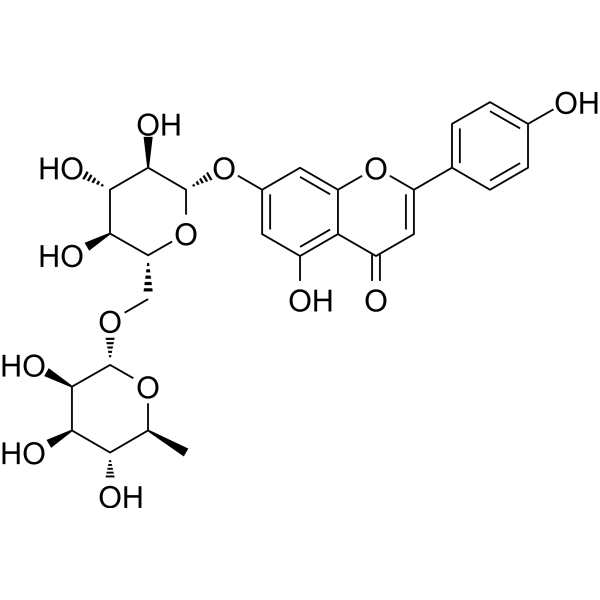
-
- HY-W701470
-
-
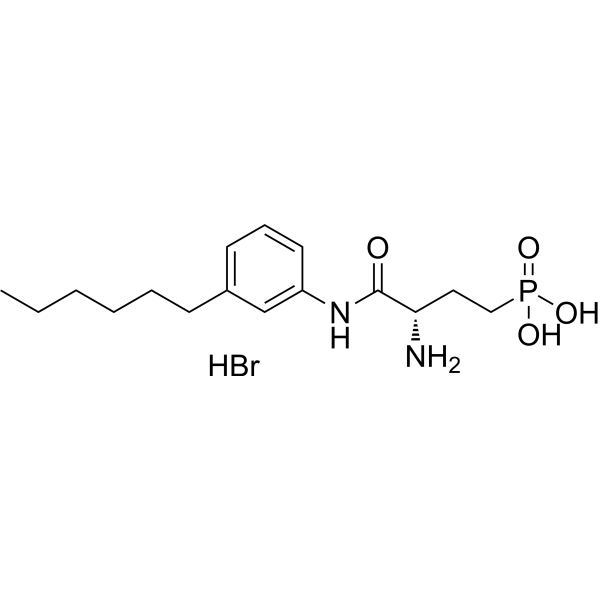
-
- HY-139467
-
|
|
SHP2
PKC
|
Metabolic Disease
|
|
PF-04577806 is a potent, selective and ATP competitive PKC inhibitor. PF-04577806 shows potent inhibitory activity towards PKCα, PKCβI, PKCβII, PKCγ, and PKCθ with IC50s of 2.4 nM, 8.1 nM, 6.9 nM, 45.9 nM, and 29.5 nM, respectively. PF-04577806 can reverse retinal vascular leakage in diabetic rats .
|
-
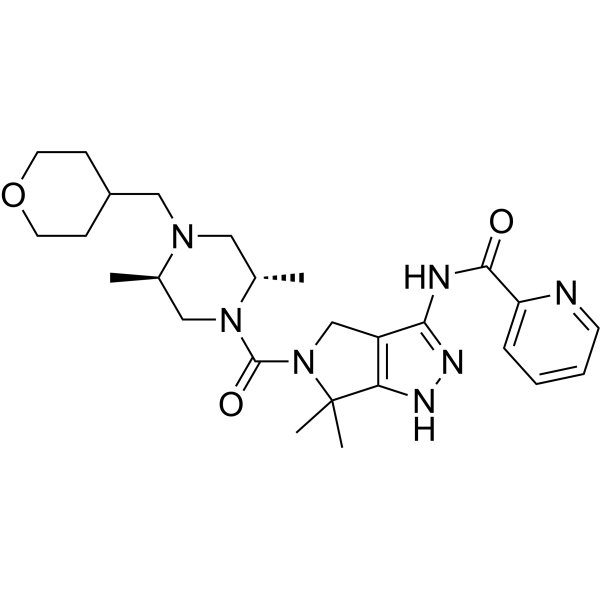
-
- HY-133621
-
|
|
Others
|
Cancer
|
|
9,10-Dichlorostearic acid is a chlorinated stearic acid with antimutagenic properties. 9,10-Dichlorostearic acid can cause membrane damage by inducing leakage of adenosine triphosphate (ATP) from mammalian tumour cells in vitro .
|
-
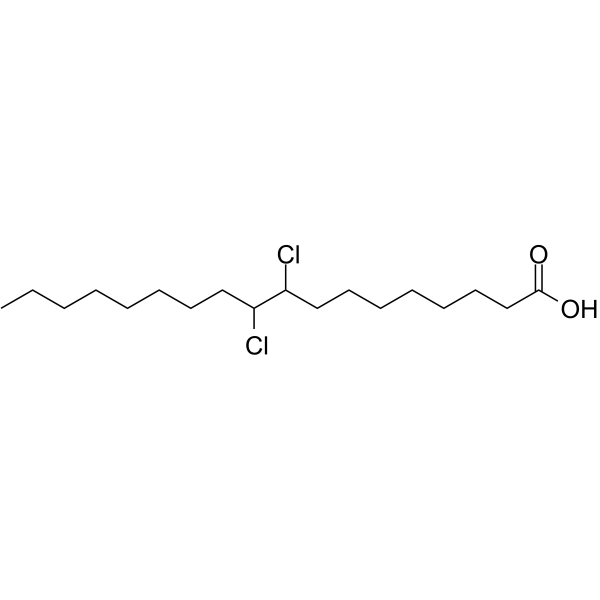
-
- HY-N1616
-
|
|
Apoptosis
|
Others
|
|
1β-Hydroxyeuscaphic acid has significant hepatoprotective activity by lowering the leakage of intracellular enzymes, reducing the oxidation of proteins and decreasing the incidence of apoptosis .
|
-
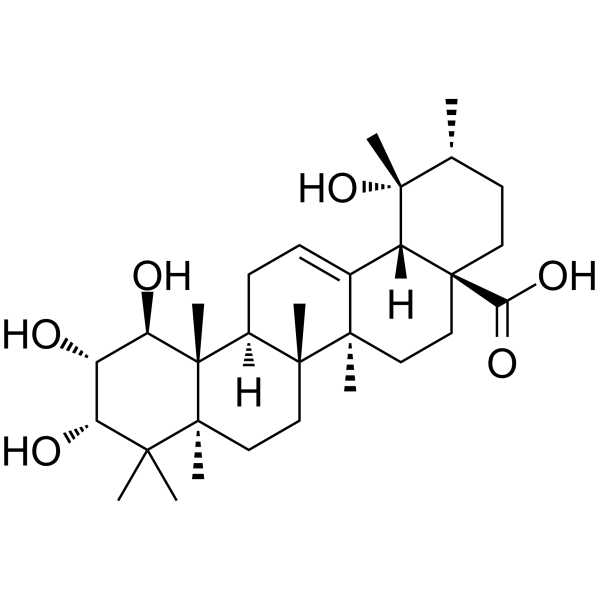
-
- HY-D0040
-
Calcein
4 Publications Verification
Fluorexon
|
Fluorescent Dye
|
Others
|
|
Calcein is a fluorescent dye and self-quenching probe, used as an indicator of lipid vesicle leakage, and also as a complexometric indicator for titration of calcium ions with EDTA, and for fluorometric determination of calcium.
|
-

-
- HY-151284
-
|
|
Bacterial
Fungal
|
Infection
|
|
Antifungal agent 38 is a geterocyclic disulfide, an antifungal and antibacterial agent. Antifungal agent 38 induces the shrinkage of hyphae, disrupts the integrity of the plasma membrane, and causes the damage and leakage of cell contents .
|
-
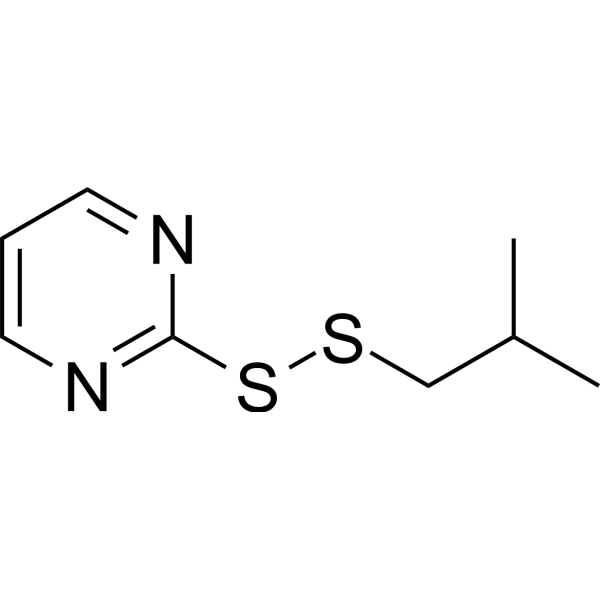
-
- HY-113446
-
-
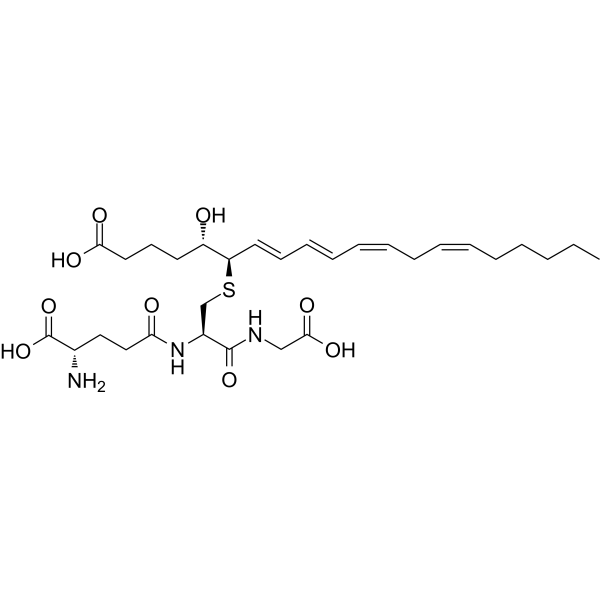
-
- HY-121615
-
|
alpha-Phellandrene
|
Fungal
|
Infection
|
|
α-Phellandrene (alpha-Phellandrene) has antifungal activity. α-Phellandrene significantly inhibits the hyphal growth of P. cyclopium, destroys their cell membrane integrity and causes leakage of cellular components .
|
-
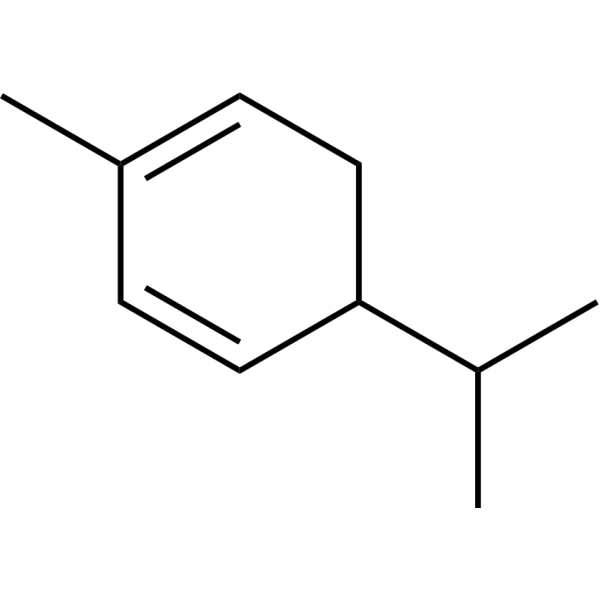
-
- HY-145633
-
|
OPT 302; VGX-300
|
VEGFR
|
Cardiovascular Disease
|
|
Sozinibercept (OPT 302; VGX-300) is a soluble form of VEGFR-3, potently inhibits the activity of VEGF-C/D, which are the proangiogenic factors, inhibiting angiogenesis and vascular leakage. Sozinibercept also inhibits diabetic retinal edema in rats .
|
-

-
- HY-151925
-
|
|
Bacterial
|
Infection
|
|
Antibacterial agent 126 is a potent antibacterial agent. Antibacterial agent 126 reduces the burden of biofilm to avoid developing agent resistance. Antibacterial agent 126 disturbs the membrane integrity and leads to the leakage of intracellular materials. Antibacterial agent 126 increase in ROS and reactive nitrogen species (RNS) production .
|
-

-
- HY-101990
-
|
|
Others
|
Others
|
|
IMS2186 is an antichoroidal neovascularization (CNV) reagent. IMS2186 can arrest cancer cell cycle in G2/M phase, thus exerting anti-proliferation and anti-angiogenesis effects. IMS2186 has no intraocular toxicity and reduces the amount of eye leakage and diseased cells .
|
-

-
- HY-162267
-
|
|
Others
|
Inflammation/Immunology
|
|
LPAR1 antagonist 1 (compound 18) is a potent, oral active and selective LPAR1 antagonist with the IC50 of 3.3 nM. LPAR1 antagonist 1 can be used for study of fibrosis .
|
-
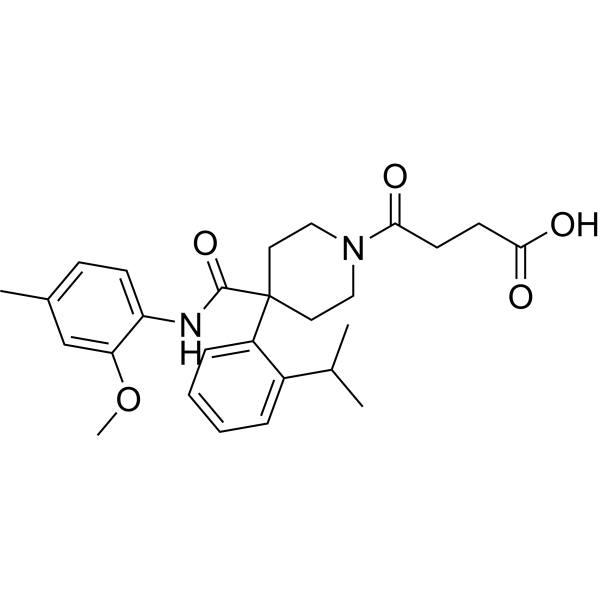
-
- HY-N10269
-
|
|
Fungal
Endogenous Metabolite
|
Infection
|
|
Phomalactone, produced by the fungus Nigrospora sphaerica, specifically inhibits the mycelial growth of Phytophthora infestans, with an MIC value of 2.5 mg/L . Phomalactone is phytotoxic to Z. elegans and other plant species by inhibition of seedling growth and by causing electrolyte leakage from photosynthetic tissues of both Z. elegans leaves and cucumber cotyledons .
|
-

-
- HY-P0269
-
|
Magainin I
|
Bacterial
Fungal
Antibiotic
|
Infection
|
|
Magainin 1 (Magainin I) is an antimicrobial and amphipathic peptide isolated from the skin of Xenopus laevis. Magainin 1 exhibits antibiotic activity against numerous Gram-negative and Gram-positive bacteria .
|
-

-
- HY-P0269A
-
|
Magainin I TFA
|
Bacterial
Fungal
Antibiotic
|
Infection
|
|
Magainin 1 TFA (Magainin I TFA) is an antimicrobial and amphipathic peptide isolated from the skin of Xenopus laevis. Magainin 1 TFA exhibits antibiotic activity against numerous Gram-negative and Gram-positive bacteria .
|
-

-
- HY-15292
-
S107
1 Publications Verification
|
Others
|
Cardiovascular Disease
|
|
S107 is an orally available, blood brain barrier-permeable compound, which stabilizes RyR2 channels by enhancing the binding of calstabin 2 to the mutant Ryr2-R2474S channel. S107 inhibits Ca 2+ leakage from the sarcoplasmic reticulum (SR) and prevents cardiac arrhythmias and raises the seizure threshold .
|
-
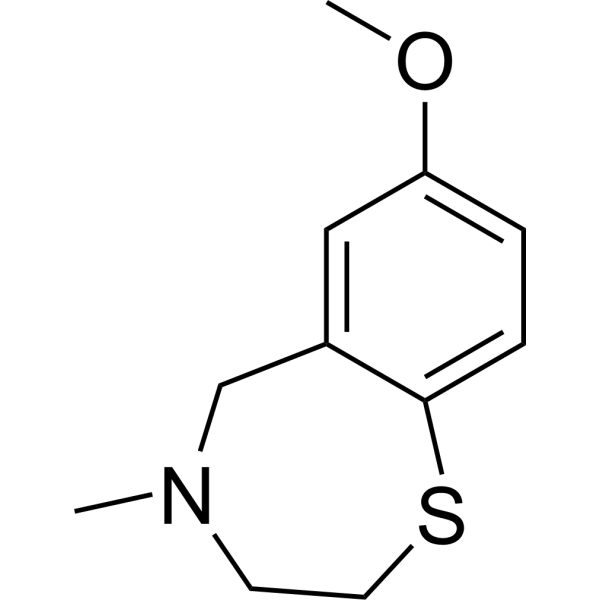
-
- HY-P99416
-
|
AGN-150998; MP0112
|
VEGFR
|
Cardiovascular Disease
Inflammation/Immunology
|
|
Abicipar pegol (AGN-150998, MP0112) is an anti-VEGF DARPin molecule, a novel class of small proteins containing ankyrin repeat domains engineered to bind with high specificity and affinity to target proteins. Abicipar pegol effectively inhibits angiogenesis and vascular permeability and is used in the study of diseases related to ocular inflammation by intravitreal injection, reducing mean retinal thickness and leakage area .
|
-

-
- HY-129101
-
|
Eseroline fumarate
|
5-HT Receptor
|
Neurological Disease
|
|
(-)-Eseroline fumarate is a metabolic of Physostigmine (HY-N6608), an AChE inhibitor. (-)-Eseroline fumarate elicits a leakage of lactic acid dehydrogenase (LDH) from cancer cells. (-)-Eseroline fumarate also induces the release of adenine nucleotides and 5-hydroxytryptamine (5-HT) from neuronal cells, thus induce cell death. (-)-Eseroline fumarate inhibits the electrically evoked twitches of the mouse vas deferens and of the guinea-pig ileum .
|
-

-
- HY-P5904
-
|
Caveolin-1 scaffolding domain peptide
|
c-Met/HGFR
|
Others
|
|
Caveolin-1 (82-101) amide (human, mouse, rat) (Caveolin-1 scaffolding domain peptide) is a peptide that reverses aging-associated deleterious changes in multiple organs. Caveolin-1 (82-101) amide (human, mouse, rat) inhibits tyrosine kinases .
|
-
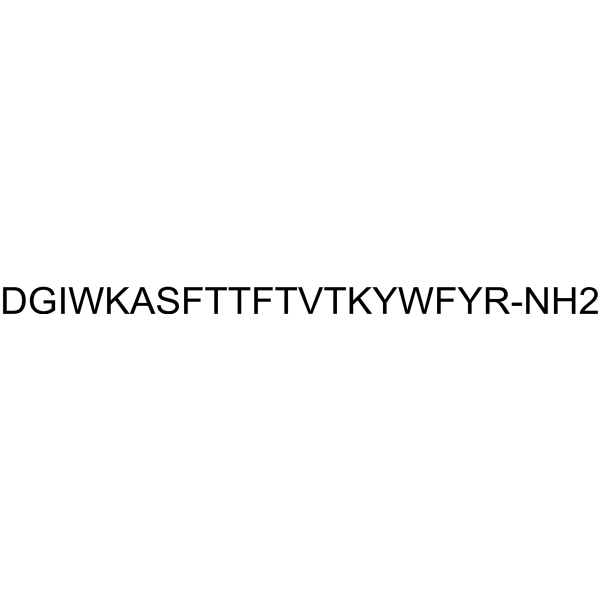
-
- HY-P4108
-
|
|
Influenza Virus
|
Others
|
|
TAT-HA2 Fusion Peptide is a peptide-based delivery agent that combines the pH-sensitive HA2 fusion peptide from Influenza and the cell-penetrating peptide TAT from HIV. TAT-HA2 Fusion Peptide induces the cellular uptake of macromolecules into endosomes via the TAT moiety and to respond to the acidifying lumen of endosomes to cause membrane leakage and release of macromolecules into cells via the HA2 moiety .
|
-

-
- HY-155946
-
|
Sac-1004
|
Others
|
Cardiovascular Disease
Metabolic Disease
Inflammation/Immunology
Cancer
|
|
CU06-1004 (Sac-1004) is an orally active endothelial dysfunction blocker. CU06-1004 ameliorates endothelial dysfunction by inhibiting hyperpermeability and inflammation, and is potent in inhibiting vascular leakage and inflammation in various animal models, such as diabetic retinopathy, stroke, cancer, and inflammatory bowel disease. CU06-1004 ameliorates CDAA-induced mouse model of NASH. CU06-1004 also improves cardiac function .
|
-
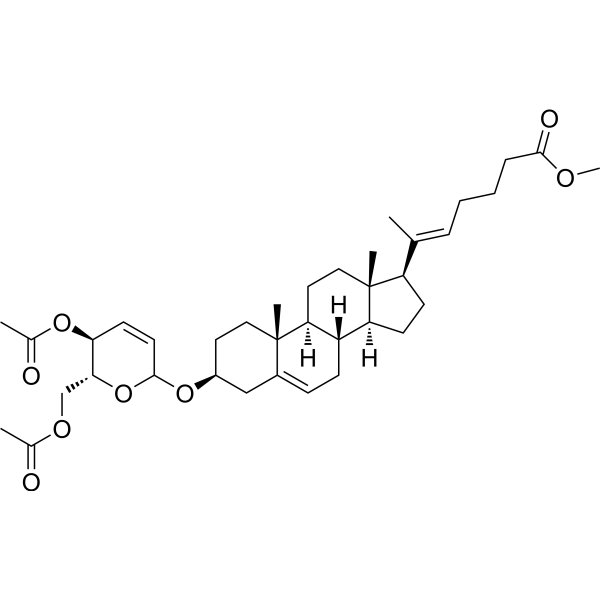
-
- HY-149779
-
|
|
Calcium Channel
|
Cardiovascular Disease
|
|
RyR2 stabilizer-1 (compound 12a) is a potent RyR2 stabilizer and SERCA2a activator with EC50s of 2.7 μM for RyR2 and 383 nM for SERCA2. RyR2 stabilizer-1 inhibits Ca 2+ leakage from the SR RyR2 while promoting SERCA2 to pump Ca 2+ back to SR, which make RyR2 stabilizer-1 possible to prevent cardiac arrhythmias .
|
-

-
- HY-146460
-
|
|
Reactive Oxygen Species
|
Infection
|
|
Antimicrobial agent-2 (compound V-a) is a broad-spectrum antimicrobial agent, possessing inhibitory activity against various Gram-positive and -negative bacteria. Antimicrobial agent-2 has excellent inhibitory effect on Methicillin-resistant Staphylococcus aureus (MRSA) with a MIC of 1 μg/mL. Antimicrobial agent-2 can effectively damage the membrane and lead to the leakage of protein, also can induce the generation of ROS. Antimicrobial agent-2 exhibits low toxicity, no obvious resistance and good bioavailability .
|
-
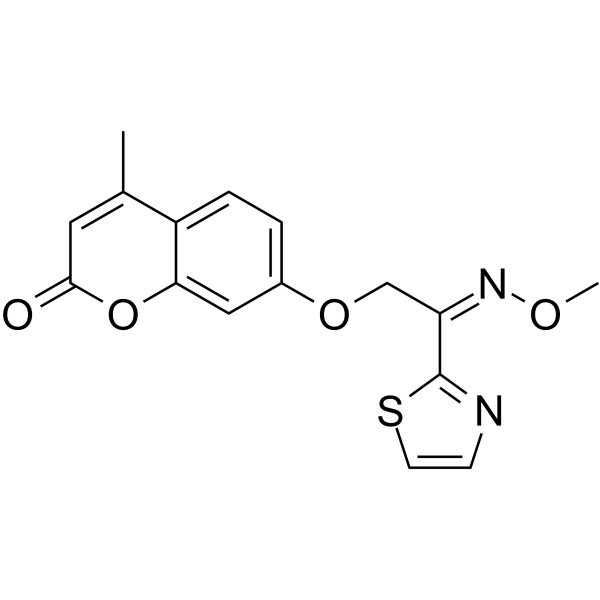
-
- HY-103158
-
|
|
Lipoxygenase
|
Others
|
|
BW B70C is a potent, selective and orally activearachidonic acid 5-lipoxygenase inhibitor. BW B70C inhibits both acute and allergic bronchoconstriction and late-phase eosinophil accumulation subsequent to allergen inhalation in guinea-pigs. BW B70C prevents leukotriene C4 synthesis and reduces leucocyte migration to the airways lumen as well as albumin microvascular leakage. BW B70C has the potential for the research of anti-asthma agent .
|
-
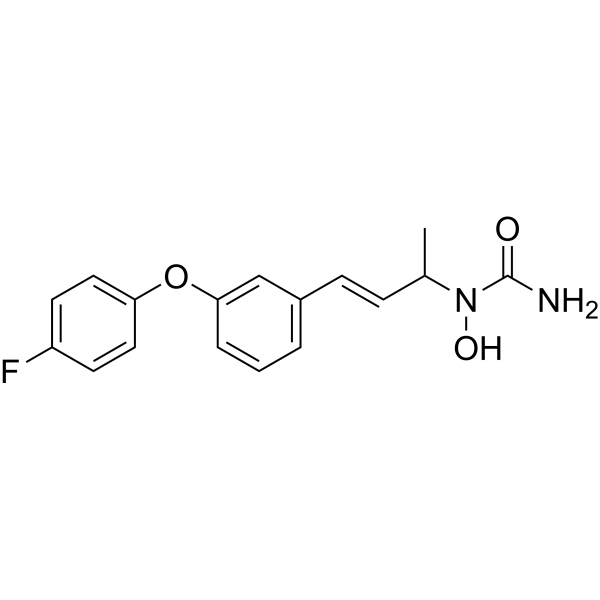
-
- HY-130272
-
|
|
Others
|
Cardiovascular Disease
|
|
Anti-MI/R injury agent 1 (compound 18), a Panaxatriol derivative, is an orally active, potent anti-myocardial ischemia/reperfusion (anti-MI/R) injury agent. Anti-MI/R injury agent 1 enhances oxygen-glucose deprivation and reperfusion (OGD/R)-induced cardiomyocyte injury cell viability. Anti-MI/R injury agent 1 can markedly reduce myocardial infarction size, decrease circulating cardiac troponin I (cTnI) leakage, and alleviate cardiac tissue damage in the rats .
|
-
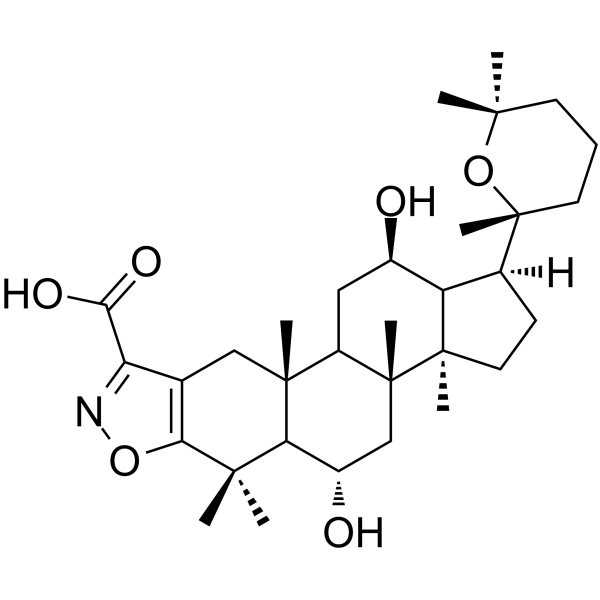
-
- HY-111174
-
-
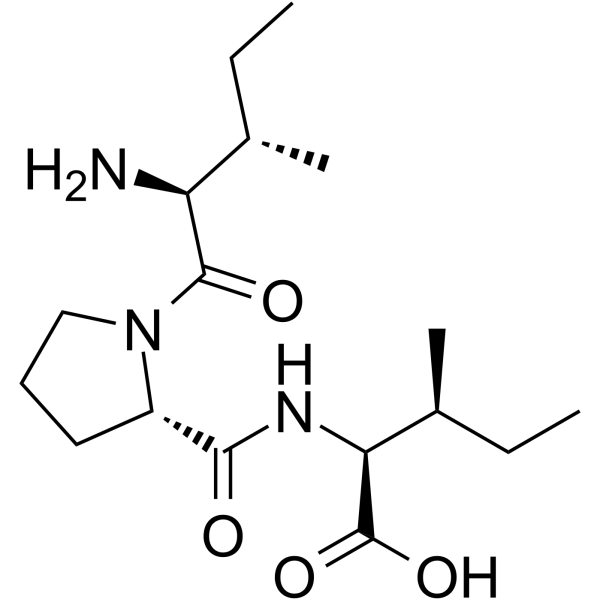
-
- HY-125039
-
|
|
Glutathione Peroxidase
|
Cardiovascular Disease
Neurological Disease
|
|
N-Acetyl lysyltyrosylcysteine amide is a potent, reversible, specific, and non-toxic tripeptide inhibitor of myeloperoxidase (MPO). N-Acetyl lysyltyrosylcysteine amide effectively inhibits MPO generation of toxic oxidants in vivo. N-Acetyl lysyltyrosylcysteine amide reduces neuronal damage and preserves brain tissue and neurological function in the stroked brain. N-Acetyl lysyltyrosylcysteine amide inhibits MPO-dependent hypochlorous acid (HOCl) generation, protein nitration, and LDL oxidation .
|
-
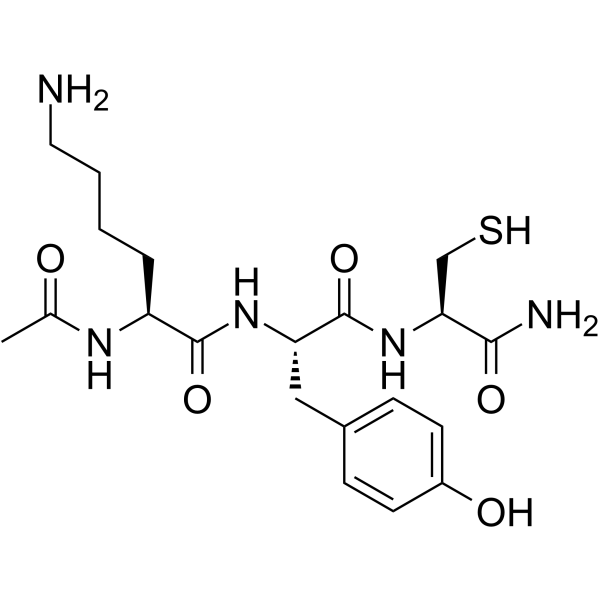
-
- HY-149079
-
|
|
Parasite
Necroptosis
|
Infection
|
|
Antiparasitic agent-15, a pyridine-thiazolidinone, has anti-Trypanosoma cruzi and leishmanicidal activities. Antiparasitic agent-15 has IC50s of 0.9 μM and 0.64 μM against trypomastigote and amastigote forms of T. cruzi. Antiparasitic agent-15 has IC50s of 42.2 μM and 9.58 μM against trypomastigote and amastigote forms of L. amazonensis. Antiparasitic agent-15 induces parasite cell death through necrosis induction. Antiparasitic agent-15 induces morphological changes such as shortening, retraction and curvature of the parasite body and leakage of internal content with T. cruzi trypomastigotes .
|
-
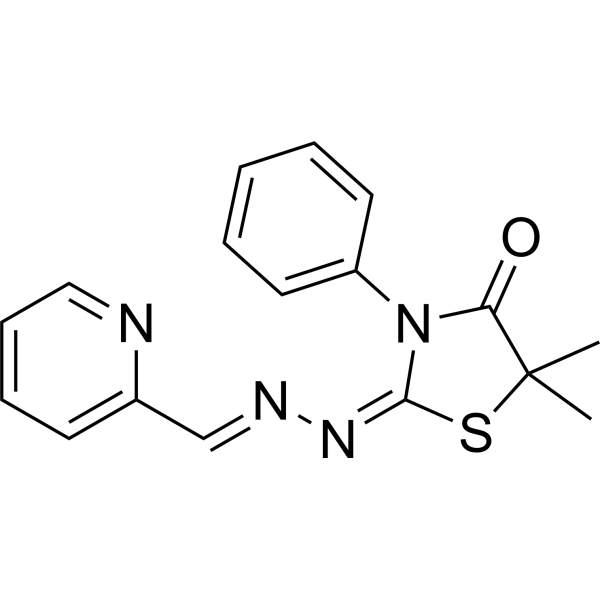
-
- HY-149080
-
|
|
Parasite
Necroptosis
|
Infection
|
|
Antiparasitic agent-16, a pyridine-thiazolidinone, has anti-Trypanosoma cruzi and leishmanicidal activities. Antiparasitic agent-16 has IC50s of 1.0 μM and 0.6 μM against trypomastigote and amastigote forms of T. cruzi. Antiparasitic agent-16 has IC50s of 150.2 μM and 16.75 μM against trypomastigote and amastigote forms of L. amazonensis. Antiparasitic agent-16 induces parasite cell death through necrosis induction. Antiparasitic agent-16 induces morphological changes such as shortening, retraction and curvature of the parasite body and leakage of internal content with T. cruzi trypomastigotes .
|
-
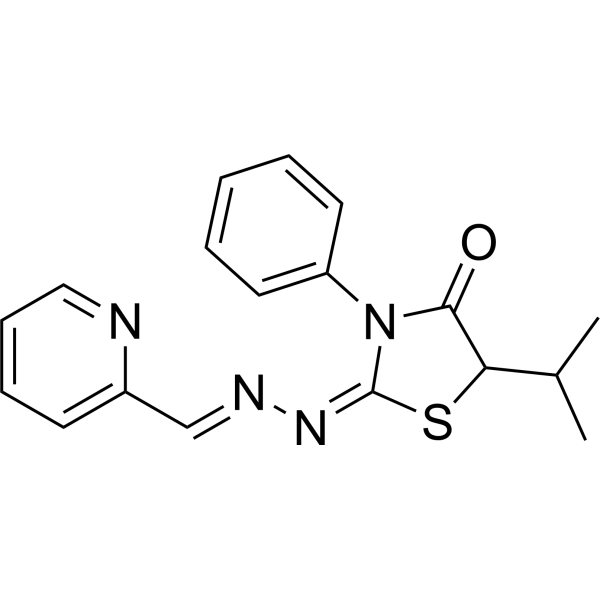
| Cat. No. |
Product Name |
Type |
-
- HY-D0789
-
|
|
Fluorescent Dyes/Probes
|
|
ANTS is a fluorescent dye. ANTS and DPX are encapsulated in liposomes can be an effective approach for measuring membrane leakage .
|
-
- HY-D0040
-
Calcein
4 Publications Verification
Fluorexon
|
Fluorescent Dyes/Probes
|
|
Calcein is a fluorescent dye and self-quenching probe, used as an indicator of lipid vesicle leakage, and also as a complexometric indicator for titration of calcium ions with EDTA, and for fluorometric determination of calcium.
|
| Cat. No. |
Product Name |
Target |
Research Area |
-
- HY-P0269
-
|
Magainin I
|
Bacterial
Fungal
Antibiotic
|
Infection
|
|
Magainin 1 (Magainin I) is an antimicrobial and amphipathic peptide isolated from the skin of Xenopus laevis. Magainin 1 exhibits antibiotic activity against numerous Gram-negative and Gram-positive bacteria .
|
-
- HY-P5904
-
|
Caveolin-1 scaffolding domain peptide
|
c-Met/HGFR
|
Others
|
|
Caveolin-1 (82-101) amide (human, mouse, rat) (Caveolin-1 scaffolding domain peptide) is a peptide that reverses aging-associated deleterious changes in multiple organs. Caveolin-1 (82-101) amide (human, mouse, rat) inhibits tyrosine kinases .
|
-
- HY-P4108
-
|
|
Influenza Virus
|
Others
|
|
TAT-HA2 Fusion Peptide is a peptide-based delivery agent that combines the pH-sensitive HA2 fusion peptide from Influenza and the cell-penetrating peptide TAT from HIV. TAT-HA2 Fusion Peptide induces the cellular uptake of macromolecules into endosomes via the TAT moiety and to respond to the acidifying lumen of endosomes to cause membrane leakage and release of macromolecules into cells via the HA2 moiety .
|
-
- HY-P0269A
-
|
Magainin I TFA
|
Bacterial
Fungal
Antibiotic
|
Infection
|
|
Magainin 1 TFA (Magainin I TFA) is an antimicrobial and amphipathic peptide isolated from the skin of Xenopus laevis. Magainin 1 TFA exhibits antibiotic activity against numerous Gram-negative and Gram-positive bacteria .
|
-
- HY-K1052
-
|
|
|
MCE Amphotericin B is a polyene antifungal antibiotic produced by Streptomyces nodosus. It can bind with sterols to form transmembrane channels, resulting in the leakage of intracellular substances, thus inhibiting fungal and yeast contamination.
|
-
- HY-K1044
-
|
|
|
Polymixin B is a mixture of B1 and B2 polypeptides obtained from different strains of Bacillus polymyxa, with antibacterial activity against gram-negative bacteria. It can bind lipopolysaccharide (LPS) of the outer membrane of gram-negative bacteria and disrupts the cytoplasmic membrane by inducing large pores to allow nucleotide leakage in bacterial walls. This disrupts the permeability of the cytoplasmic membrane.
|
| Cat. No. |
Product Name |
Target |
Research Area |
-
- HY-145633
-
|
OPT 302; VGX-300
|
VEGFR
|
Cardiovascular Disease
|
|
Sozinibercept (OPT 302; VGX-300) is a soluble form of VEGFR-3, potently inhibits the activity of VEGF-C/D, which are the proangiogenic factors, inhibiting angiogenesis and vascular leakage. Sozinibercept also inhibits diabetic retinal edema in rats .
|
-
- HY-P99416
-
|
AGN-150998; MP0112
|
VEGFR
|
Cardiovascular Disease
Inflammation/Immunology
|
|
Abicipar pegol (AGN-150998, MP0112) is an anti-VEGF DARPin molecule, a novel class of small proteins containing ankyrin repeat domains engineered to bind with high specificity and affinity to target proteins. Abicipar pegol effectively inhibits angiogenesis and vascular permeability and is used in the study of diseases related to ocular inflammation by intravitreal injection, reducing mean retinal thickness and leakage area .
|
| Cat. No. |
Product Name |
Category |
Target |
Chemical Structure |
Your information is safe with us. * Required Fields.
Inquiry Information
- Product Name:
- Cat. No.:
- Quantity:
- MCE Japan Authorized Agent:







































